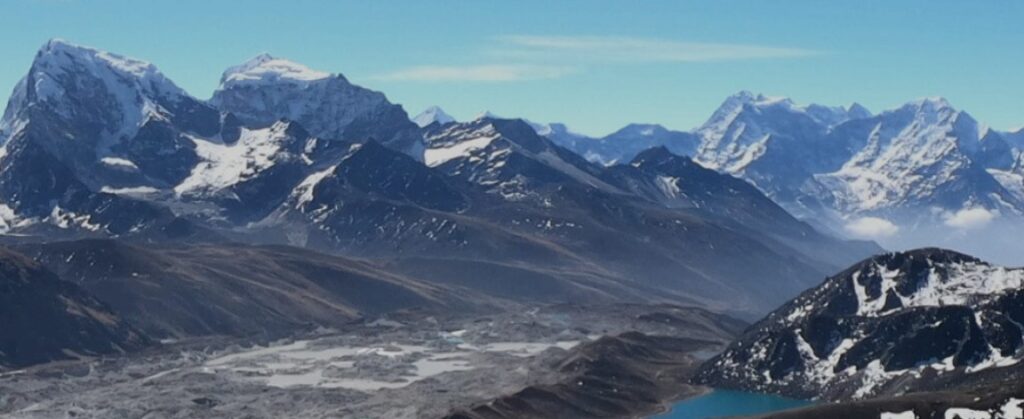Trekking in the Himalayas is a dream for many, and among all the famous trails, Everest Base Camp Trekking stands out as one of the most iconic adventures. Whether you’re a nature lover, an adventure enthusiast, or someone simply looking to disconnect from daily life, this journey offers something truly special. In this post, we’ll explore what Everest Base Camp Trekking really feels like, what to expect, how to prepare, and how Pikey Peak Trekking can be an excellent alternative or warm-up trek. Written in a relaxed and relatable tone, this guide is for everyone – even if you’ve never worn hiking boots before!
Why Choose Everest Base Camp Trekking?
When someone hears the word “Everest,” their mind instantly goes to snow-capped peaks, brave climbers, and freezing winds. But Everest Base Camp Trekking isn’t about reaching the summit of Everest itself – it’s about getting close to it and experiencing the mighty Himalayas up close. It’s an emotional journey as much as a physical one.
Here’s why so many people choose this trek:
-
You get to walk through stunning Sherpa villages, lush forests, and dramatic valleys.
-
It brings you face-to-face with the world’s highest peak without technical climbing.
-
It’s filled with cultural richness – from prayer wheels and stupas to the warm smiles of local people.
-
You can challenge yourself while staying relatively safe and supported.
What to Expect During Everest Base Camp Trekking
Let’s be real: Everest Base Camp Trekking is not a casual walk in the park. But it’s also not just for athletes or expert hikers. With the right mindset and preparation, most people can complete the trek.
Here’s what your days might look like:
-
Mornings usually begin with tea and a hearty breakfast in a teahouse.
-
You walk 5-7 hours daily, taking breaks often to enjoy views or acclimatize.
-
You’ll pass suspension bridges, glacial rivers, and endless yaks along the way.
-
Nights are spent in cozy mountain lodges, often chatting with fellow trekkers by the fire.
The highest point you’ll likely sleep at is Gorakshep (5,164 meters), and you’ll visit the actual Everest Base Camp (5,364 meters) during a day hike. Many trekkers also climb Kala Patthar (5,545 meters) for the best sunrise view of Everest.
How to Prepare for Everest Base Camp Trekking
Even though the trail is not overly technical, your body still needs to be ready. Thin air and changing weather can make things harder than expected. Here’s how to prepare:
-
Cardio training: Start walking more often, especially uphill. Jogging, swimming, or cycling also helps.
-
Break in your shoes: Don’t wear brand-new boots on the trek. Wear them on several hikes first.
-
Backpack training: Practice carrying a light daypack to get used to the weight.
-
Mental preparation: Know that you’ll be uncomfortable at times. Cold rooms, simple meals, and tired muscles are part of the charm.
Best Time to Do Everest Base Camp Trekking
Timing matters when you’re heading into the Himalayas. You want clear skies and stable weather. The best seasons are:
-
Spring (March to May): Rhododendron forests are in bloom, and the views are fantastic.
-
Autumn (September to November): Clear skies and pleasant temperatures make this the most popular season.
Avoid the monsoon (June to August) and deep winter (December to February), unless you’re an experienced trekker comfortable with challenges.
What to Pack for the Everest Base Camp Trek
Packing smart is essential. The weather can shift from sunny to snowy within hours. Here’s what you’ll definitely need:
-
Warm clothing in layers – think base layers, fleece, and a down jacket.
-
Waterproof gear – jacket, pants, and backpack cover.
-
Comfortable trekking boots – already broken-in.
-
Good quality backpack – 30 to 40 liters should do for a daypack.
-
Reusable water bottles or hydration bladder – staying hydrated is critical.
-
Basic medicines and altitude sickness tablets – always consult a doctor beforehand.
Other essentials include sunglasses, sunscreen, headlamps, snacks, power banks, and toiletries.
Pikey Peak Trekking vs Everest Base Camp Trekking
Now let’s talk about Pikey Peak Trekking, an underrated gem that often goes unnoticed. If you’re not ready to jump straight into Everest Base Camp Trekking or want a shorter alternative, Pikey Peak Trekking is ideal.
Here’s why:
-
It’s less crowded, giving you a more peaceful trekking experience.
-
Offers stunning panoramic views, including Everest, without going above 4,100 meters.
-
Easier on the body and wallet, but equally rewarding in beauty and culture.
Some trekkers even use Pikey Peak Trekking as a warm-up before attempting the more challenging Everest Base Camp Trekking. It helps with fitness, altitude adjustment, and builds confidence.
Tips to Make Your Everest Base Camp Trekking Enjoyable
-
Go slow: Altitude sickness is real. Walk at your own pace and allow your body time to adjust.
-
Stay hydrated: Drink at least 3-4 liters of water daily. Dehydration increases altitude risks.
-
Eat well: Even if the food is simple (lots of dal bhat!), it’s nutritious and gives energy.
-
Talk to locals: Learn a few Nepali words, and be open to cultural exchange.
-
Unplug and be present: With limited internet access, it’s a great time to disconnect and reflect.
Where to Start Planning Your Trek
You don’t need to spend months planning, but you should think ahead about permits, insurance, flights to Lukla, and accommodation. Many trekkers choose to go with guides or porters, which also supports the local economy.
If you’re nervous about high altitude or time constraints, again, Pikey Peak Trekking is a great entry point to the world of Himalayan trekking. It’s less commitment, lower altitude, and offers similar magical experiences.
Final Thoughts
Everest Base Camp Trekking is more than a journey through mountains – it’s a test of your spirit, resilience, and curiosity. It’s about meeting people from across the globe, laughing over shared meals, and standing in awe beneath the shadow of Everest.
If you’re still on the fence, remember this: Every step on that trail takes you closer to not just a destination, but a deeper connection with nature and yourself. Whether you start with Pikey Peak Trekking or head straight to Everest Base Camp, the mountains are waiting to share their stories with you.
So lace up those boots, pack your sense of adventure, and take the first step – the Himalayas will take care of the rest.




More Stories
What to Expect When You Book a Limo Service in Boulder, CO: A Simple Guide
Keep Your Restaurant Running: The Complete Guide to Expert Grease Trap Cleaning and Pumping
Craft Beer Strategies to Build Loyalty and Brand Power